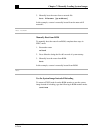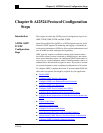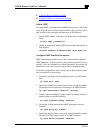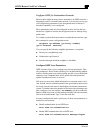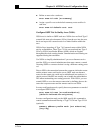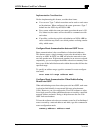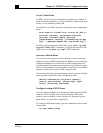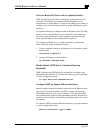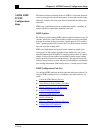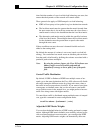
Chapter 8: AI2524 Protocol Configuration Steps
August 1997 Page 8-7
2524UM
Create Virtual Links
In OSPF, all areas must be connected to a backbone area. If there is
break in backbone continuity, or if the backbone is purposefully parti-
tioned, you can establish a virtual link.
To establish a virtual link, type this command in router configuration
mode:
area
area-id
virtual-link
router-id
[hello-
interval
seconds
] [retransmit-interval
seconds
] [transmit-delay
seconds
]
[deadinterval
seconds
] [[authentication-key
key
] | [message-digest-key
keyid
md5
key
]]
To display information about virtual links, use th
show ip ospf
virtual-links
EXEC command. To display the router ID of an
OSPF router, use the
show ip ospf
EXEC command.
Generate a Default Route
You can force an autonomous system boundary router to generate a
default route into an OSPF routing domain. Whenever you specifically
configure redistribution of routes into an OSPF routing domain, th
router automatically becomes an autonomous system boundary router.
However, an autonomous system boundary router does not, by default,
generate a default route into the OSPF routing domain.
To force the autonomous system boundary router to generate a default
route, type this command in router configuration mode:
default-information originate [always]
[metric
metricvalue
] [metric-type
type-
value
] [route-map
map-name
]
Configure Lookup of DNS Names
You can configure OSPF to look up Domain Naming System (DNS)
names for use in all OSPF show command displays. This featur
makes it easier to identify a router, because it is displayed by nam
rather than by its router ID or neighbor ID.
To configure DNS name lookup, type this command in global config-
uration mode
ip ospf name-lookup



